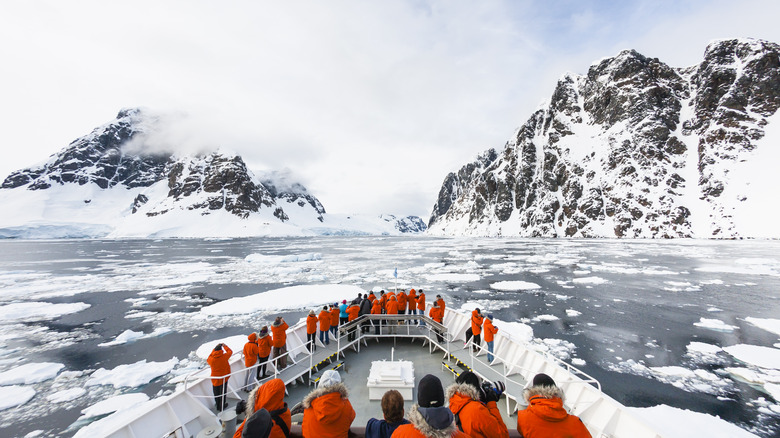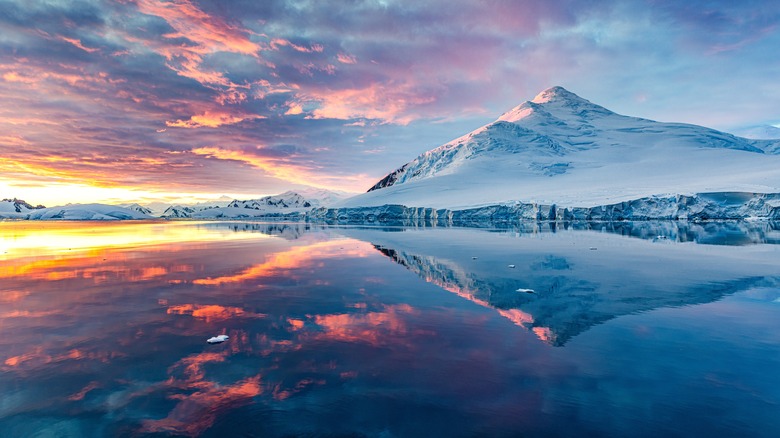Antarctica's Date Of Discovery Is More Complicated Than You'd Think
A yearning to explore the unknown has been a common human characteristic throughout history, and the search for Antarctica was no exception. Ancient Greek and Roman philosophers predicted its existence thousands of years before the continent's discovery was actually documented because they believed it needed to exist to balance the Arctic lands in the Earth's Northern Hemisphere. While literature holds that explorers discovered Antarctica in 1820, Māori oral history reveals that Polynesians are likely to have found this area of Earth with the coldest climate more than 1,000 years earlier.
According to a study published in 2021 in the Journal of the Royal Society of New Zealand, the research focused on the connections that Māori society have with Antarctica. Polynesian history is mostly recorded and recounted through oral tradition, which doesn't get the same recognition as academic literature, but some Polynesian literature not published in peer-reviewed journals is available. Combining the two, the researchers found that Polynesian chief Hui Te Rangiora led a crew on an Antarctic voyage long before Māori migrated to New Zealand and even longer before the rest of the world found — what we now know as — one of the two continents located entirely in the Southern Hemisphere.
The first written documentation of Antarctica's discovery
Although Polynesian oral records and gray literature indicate that they saw Antarctica first, written documentation accredits the first sighting of the continent to Russian explorer Fabian von Bellingshausen on January 27, 1820. He was commanding the sloops Mirny and Vostok during the voyage and also sighted the Alexander I and Peter I islands in the Antarctic Circle. Because of an incorrect journal translation, though, von Bellingshausen's achievement of spotting the mainland first went unacknowledged for many years.
Instead, credit for the first sighting of Antarctica — one of several countries in a polar zone — was held by British naval officer Edward Bransfield. He made the discovery on January 30, 1820 (just three days after von Bellingshausen), while charting the South Shetland Islands near the Antarctic Peninsula on the two-masted brig Williams. Bransfield described in his journal seeing high, snow-covered mountains, which are now known as Mount Bransfield and Mount Jacquinot.
The mistranslation and the sightings happening so closely together have made labeling who found Antarctica first a complicated and mildly debated topic. However, the Antarctic Treaty has allowed the continent to remain un-owned by any single country and protected for the sole, peaceful purpose of scientific research.

